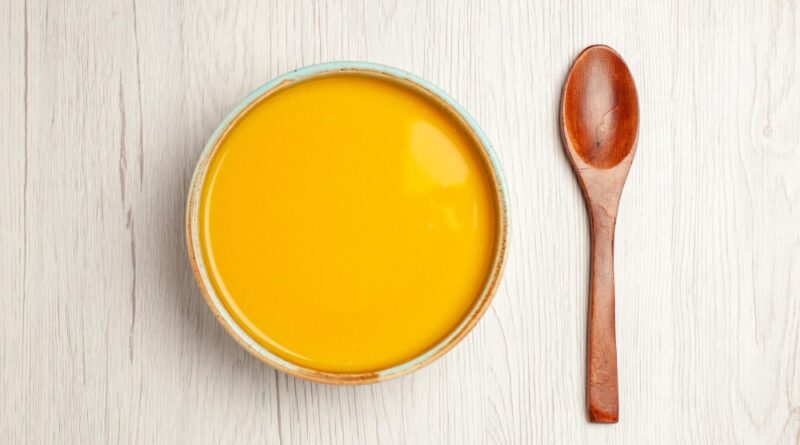Ghee in Cooking: Using Ghee as Healthier Alternative to Vegetable Oils
Ghee, a form of clarified butter, has been a staple of Indian and South Asian cuisine for generations. Due in part to its multiple health advantages, ghee has recently gained popularity in Western nations. The advantages of using ghee in cooking will be discussed in this article, along with the reasons it’s healthier than vegetable oils.
Traditional cuisine has long utilized ghee, a type of clarified butter. It is a well-liked option for frying and sautéing, especially in Indian cuisine, thanks to its rich, nutty flavor and high smoke point. But because of its distinctive qualities, ghee has recently attracted interest as a healthier substitute for vegetable oils.
Conjugated linoleic acid (CLA), a type of fatty acid with anti-inflammatory effects, is abundant in ghee and may help lower the risk of heart disease. Ghee also has a high concentration of vitamins A, D, E, and K and is free of trans fats. Ghee is rapidly being substituted for less healthy oils in a range of meals as more people learn about its health advantages.
Nutritional Benefits of Ghee
Healthy fats and important elements including vitamins A, D, E, and K are abundant in ghee. Additionally, butyric acid, which has been demonstrated to enhance gut health and lower inflammation, is a good source of it. Ghee is also free of lactose and casein, making it a great alternative for anyone who are lactose intolerant or allergic to milk.
Cooking with Ghee
Ghee is perfect for cooking at high temperatures since it has a high smoke point. Ghee has a greater smoke point than many vegetable oils, such as olive oil, which has a smoke point of about 375°F (191°C). Ghee’s smoke point is approximately 485°F (252°C). Ghee is a fantastic choice for roasting, sautéing, and frying because of this.
Aside from being adaptable, ghee may be used in a wide range of foods, such as curries, stir-fries, baked products, and even as a spread on toast. Ghee can be a healthier option to other forms of fats like butter or margarine because of its rich, nutty flavor, which gives meals depth and richness.
Ghee vs. Vegetable Oils
Many vegetable oils, such as canola, soybean, and corn oil, are highly processed and can contain unhealthy additives, such as trans fats and hydrogenated oils. These oils are often high in omega-6 fatty acids, which can cause inflammation in the body if consumed in excess. In contrast, ghee is a natural fat that is free of harmful additives and is high in healthy saturated fats, which have been shown to improve heart health.
Making Ghee at Home
It’s easy to make ghee at home, and there aren’t many tools or ingredients needed. Butter should first be melted in a saucepan over low heat before making ghee. Clarified butter will be in the middle, followed by milk solids on the bottom, and froth will appear on top as the butter melts. To remove any leftover milk solids, strain the clarified butter through cheesecloth or a fine mesh strainer after skimming off the foam and throwing it away.
The resulting ghee can be kept at room temperature for several months in an airtight jar. If you want to use this healthful fat in your cuisine, homemade ghee is a terrific option because it is more flavorful and fresher than store-bought ghee.
Conclusion
Vegetable oils can be replaced in cooking with the nutritious and adaptable substance ghee. It is free of dangerous additives, has a high smoke point, and is rich in critical nutrients. For those who are lactose intolerant or allergic to milk, ghee can be utilized in a variety of cuisines. Ghee made at home can be more flavorful and fresher than ghee purchased from a store because the method is so straightforward. You may take advantage of the health advantages of this conventional superfood while enhancing the flavor and complexity of your favorite recipes by using ghee in cooking.
In conclusion, ghee has gained popularity as a healthier substitute for vegetable oils in cooking. Ghee is a versatile ingredient that may be utilized in a variety of meals thanks to its high smoke point and rich, nutty flavor. Ghee is free of trans fats and also includes essential vitamins and CLA, all of which have been linked to a number of health advantages. People can take advantage of the many benefits of this traditional ingredient while actively working to enhance their general health and well-being by using ghee in their cooking.




